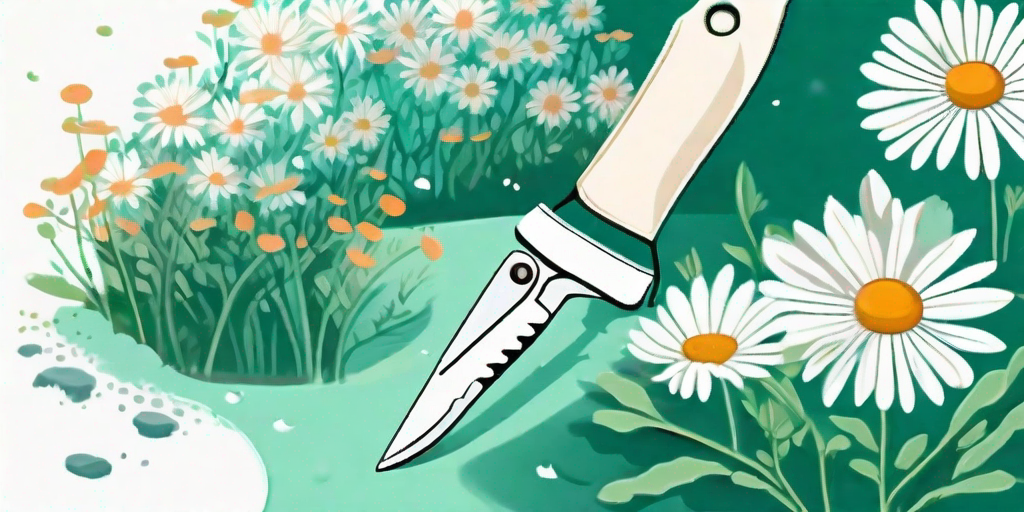
As the winter snow melts away and the first signs of spring start to appear, it's time to put on your gardening gloves and get ready to prune your daisies. Pruning is not just about making your garden look neat and tidy, it's about ensuring the health and longevity of your plants. And when it comes to daisies, a little bit of pruning can go a long way in ensuring a blooming spring. So, let's dive into the world of pruning and discover how you can transform your winter-weary daisies into springtime superstars.
The Importance of Pruning
Pruning is often seen as a chore, something that needs to be done but isn't particularly enjoyable. But pruning is actually an essential part of gardening, and it's something that can bring great joy if done correctly. Not only does it help to maintain the shape and size of your plants, but it also promotes healthy growth and flowering.
When it comes to daisies, pruning is especially important. Daisies are perennial plants, which means they come back year after year. But without proper pruning, they can become leggy and sparse. By pruning your daisies, you can encourage bushier growth and more flowers. So, if you want a garden full of vibrant, blooming daisies, it's time to embrace the art of pruning.
When to Prune
Timing is everything when it comes to pruning. Prune too early and you risk damaging the plant; prune too late and you may not see the benefits until the following year. The best time to prune daisies is in early spring, just as the new growth starts to appear. This allows the plant to focus its energy on producing new shoots and flowers, rather than maintaining old, unproductive stems.
However, it's also important to keep an eye on the weather. If a late frost is forecast, it may be worth delaying your pruning until the risk has passed. Frost can damage new growth, so it's better to be safe than sorry. After all, patience is a virtue, especially in the world of gardening.
How to Prune
Tools of the Trade
Before you start pruning, you'll need to gather your tools. A pair of sharp, clean secateurs is essential. Dull or dirty tools can damage the plant and introduce disease, so it's worth investing in a good pair. You may also need a pair of gardening gloves to protect your hands, especially if you're dealing with thorny daisies.
Once you have your tools, it's time to start pruning. But before you start hacking away, take a moment to observe your daisies. Look for any dead or diseased stems, as these should be removed first. Also, pay attention to the overall shape of the plant. Your goal is to create a balanced, symmetrical shape that will encourage even growth.
The Pruning Process
Start by removing any dead or diseased stems. Cut these back to the base of the plant, making sure to make a clean, sharp cut. Next, prune back any old, woody stems. These are unlikely to produce many flowers, so it's better to remove them and allow the plant to focus its energy on new growth.
Once you've removed the old growth, it's time to shape the plant. Aim to create a rounded, bushy shape by cutting back the stems to different lengths. This will encourage the plant to produce new shoots at different levels, creating a fuller, more attractive plant.
Aftercare
Pruning is only half the battle. Once you've pruned your daisies, it's important to provide them with the care they need to thrive. This includes watering, feeding, and protecting them from pests and diseases.
Water your daisies regularly, especially in the weeks following pruning. This will help the plant to recover and encourage new growth. Feed your daisies with a balanced, slow-release fertiliser to provide them with the nutrients they need to produce an abundance of flowers. And keep an eye out for pests and diseases. If you spot any signs of trouble, act quickly to prevent the problem from spreading.
FAQs
Can I prune my daisies in the fall?
While it's possible to prune daisies in the fall, it's generally better to wait until spring. Pruning in the fall can stimulate new growth, which may not have time to harden off before the first frosts. This can lead to frost damage and a less productive plant the following year.
What if I prune too much?
Don't panic! Daisies are resilient plants and can usually recover from a heavy prune. However, it may take a little longer for the plant to bounce back and start producing flowers. In the future, try to avoid removing more than one-third of the plant at a time.
Do all types of daisies need pruning?
Most types of daisies benefit from regular pruning. However, the exact timing and method may vary depending on the species. Always do your research before pruning a new plant.
Conclusion
Pruning may seem like a daunting task, but with a little knowledge and practice, it can become a rewarding part of your gardening routine. So, don't be afraid to pick up those secateurs and give it a go. Your daisies will thank you for it!
And remember, gardening is not a race. It's a journey. So, take your time, enjoy the process, and look forward to a garden full of blooming daisies come spring.















